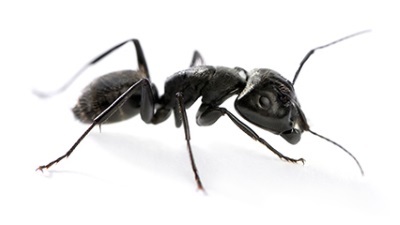Getting The Pest Control Chicago To Work
Getting The Pest Control Chicago To Work
Blog Article
Pest Control Chicago for Dummies
Table of ContentsPest Control Chicago - QuestionsSee This Report about Pest Control ChicagoHow Pest Control Chicago can Save You Time, Stress, and Money.10 Simple Techniques For Pest Control ChicagoSome Known Details About Pest Control Chicago The Main Principles Of Pest Control Chicago
Growing or harvesting a plant prior to (or after) an insect is existing lowers pest damage by avoidance. Trapping and calculating an insect's growing degree days can help with preparing around a bug's lifecycle. Damage resistance can in some cases be achieved by growing a plant early to make sure that the plants are more powerful, a lot more immune, and much more tolerant to damages by the time insect pests are existing.
By creating a small, regulated room that the bugs like, it is possible to divert pests away from the main plant. 2 methods for this are trap cropping and strip harvesting. is planting a preferred host plant of an insect bug near the main plant that is to be safeguarded.
If essential, the insects can then be eliminated in the trap crop. Catch plants can be any type of varieties that the insect preferseven be the very same species as the main plant - Residential pest control Chicago. If the catch crop is the exact same varieties as the primary crop, it ought to be planted each time that will best tempt the insect away from the primary crop
The 20-Second Trick For Pest Control Chicago
 This practice is helpful when gathering a catch plant since it preserves some environment for the insect. Consequently, the pest does stagnate to discover brand-new environment in a surrounding higher worth or even more prone plant. https://writeablog.net/pstc0ntrlchg/bug-removal-experts-in-chicago-your-best-solution-for-a-pest-free-home. The methods currently discussed emphasis on reducing plant exposure to insect parasites, but it is likewise possible to minimize return loss also when insect damages occurs
This practice is helpful when gathering a catch plant since it preserves some environment for the insect. Consequently, the pest does stagnate to discover brand-new environment in a surrounding higher worth or even more prone plant. https://writeablog.net/pstc0ntrlchg/bug-removal-experts-in-chicago-your-best-solution-for-a-pest-free-home. The methods currently discussed emphasis on reducing plant exposure to insect parasites, but it is likewise possible to minimize return loss also when insect damages occursPlant them appropriately and keep the plants healthy and balanced by carefully sprinkling, fertilizing, and trimming them. If an insect or disease creates inappropriate damages regardless of preventative efforts, select a reliable monitoring method that will have the least quantity of influence on other living creatures and the setting.
The Single Strategy To Use For Pest Control Chicago
 Seek signs and symptoms the plant displays as an outcome of insect task. Analyze your plants usually. Recognize your plants to make sure that the twisted leaves, unusual coloration, or strange-looking frameworks you see are not a regular component of the plant. Attempt to eliminate site-related troubles by ensuring that the dirt kind, water drainage problems, fertility level, and other environmental conditions are desirable for the plant.
Seek signs and symptoms the plant displays as an outcome of insect task. Analyze your plants usually. Recognize your plants to make sure that the twisted leaves, unusual coloration, or strange-looking frameworks you see are not a regular component of the plant. Attempt to eliminate site-related troubles by ensuring that the dirt kind, water drainage problems, fertility level, and other environmental conditions are desirable for the plant.Insects and termites usually are associated with particular plants, and they follow particular development and behavior patterns as the season proceeds. Use recommendation books from the library or yard facility to identify bugs. If you can not find an exact description there, get in touch with somebody in your neighborhood extension office. Find out about the bug's life process, habits, and natural enemies.
If so, an application of a nonselective pesticide can kill them, allowing the pest population to rebound uninhibited by predators and bloodsuckers, which may have been providing considerable control. If a control is required, take into consideration physical or biorational methods first. If they are unavailable or not practical, you might need to carefully use a standard chemical control.
Examine This Report about Pest Control Chicago
 Some aphids and mites can be knocked off by splashing the plant with water. You can use traps to catch particular insects, and obstacles to shield plants from insect attack or disease infection.
Some aphids and mites can be knocked off by splashing the plant with water. You can use traps to catch particular insects, and obstacles to shield plants from insect attack or disease infection.In some instances, the best option may be literally getting rid of the plant and replacing it with one that will certainly not be influenced by the insect or disease. The initial group consists of living microorganisms that can eliminate the pest.
Bloodsuckers reside on and usually eliminate an additional organism, called the host. Some parasitic wasps utilize caterpillars, whiteflies, aphids, and soft scales as hosts. An instance of an approach that makes use of a normally taking place biochemical is the germs Bacillus thuringiensis (Bt). Bt contains a healthy protein that is toxic to specific bugs, yet harmless to other organisms.
See This Report about Pest Control Chicago
When the sensitive insect pest feeds my link on the sprayed fallen leaves, it will certainly ingest the protein and be eliminated. Conventional chemicals are used just as a last resource in an IPM program, yet in some cases are one of the most reliable ways of control. To have the best effect, these materials need to be applied on a certain component of the plant when the parasite is most at risk.
In most cases, ecologically risk-free chemicals such as gardening oil or insecticidal soap are reliable choices - https://triberr.com/pstc0ntrlchg. Once again, applications need to be timed very carefully to have the best impact on the pest insect populace. Since they have no residual activity after they have actually dried out, soaps and oils are usually the choice that is the least disruptive to populations of useful organisms
Use these words as standards to aid you choose the least hazardous product among the effective options. For most landscape parasites, you need to consider chemicals in just the first 2 groups.
The Basic Principles Of Pest Control Chicago
Refer to the Woody Ornamental Bug, Termite, and Disease Management Guide, released by Penn State Expansion, or to another present recommendation for a listing of materials that are signed up for use on plants in your state. Check out the tag to be certain that you have actually chosen an item that is reliable against the insect you have actually identified, and select your timing based upon professional recommendations.
Report this page